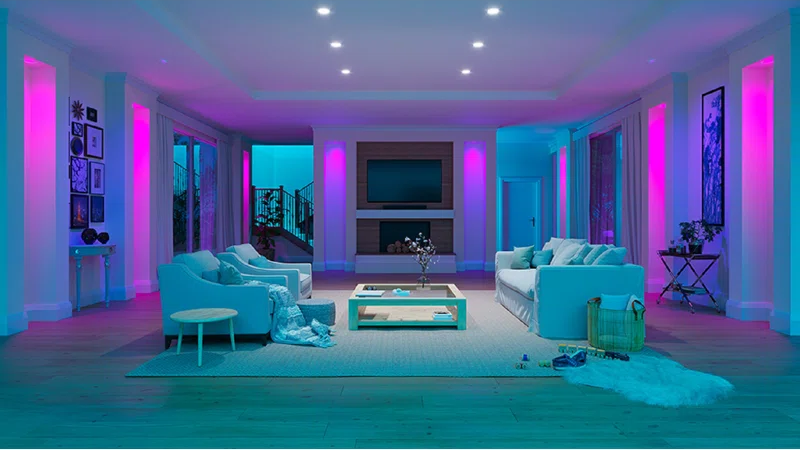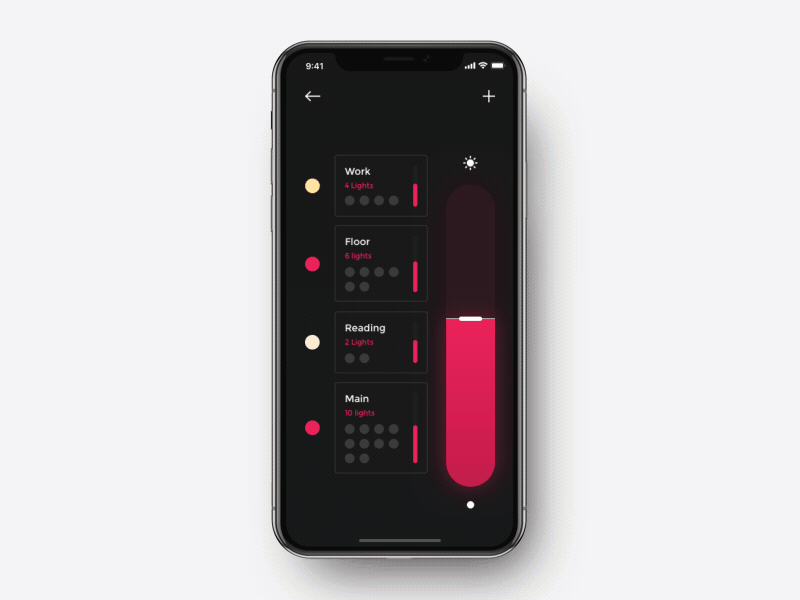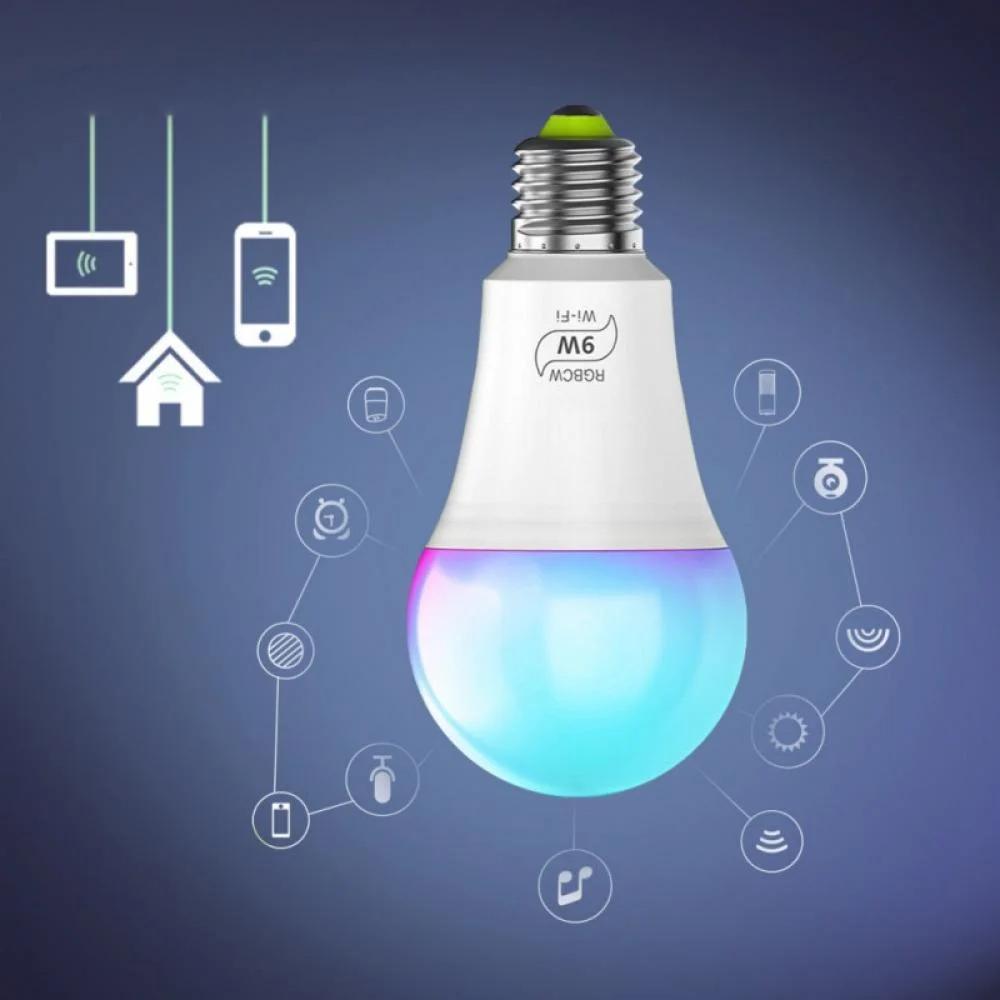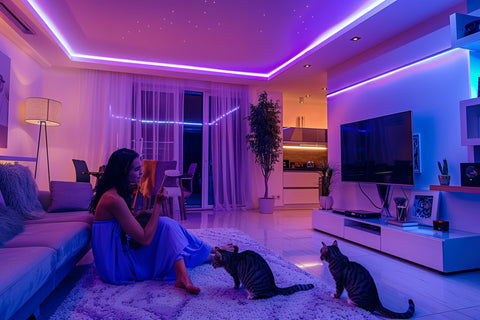Do Smart Bulbs Use More Electricity?
Do smart bulbs use more electricity than traditional lighting? As smart lighting becomes more common in homes, many people are curious about how these innovative bulbs impact energy consumption and monthly utility costs.
Picture this: you walk into your home, and the lights turn on automatically to your preferred brightness. Later, you dim them with a quick tap on your phone or a voice command. This kind of convenience is why smart lighting has become so popular.
In this post, we’ll explore whether smart lighting truly lives up to its energy-saving promises.

Smart Bulbs vs. Regular Bulbs: Energy Consumption Breakdown
To understand if smart bulbs use more electricity, let’s first look at how they stack up against traditional lighting.
Here’s a simple comparison table to illustrate typical energy consumption:
| Bulb Type | Wattage | Annual Energy Cost (Avg.) |
|---|---|---|
| Incandescent Bulb | 60W | $7.23 |
| CFL Bulb | 14W | $1.69 |
| LED Bulb | 9W | $1.08 |
| Smart LED Bulb | 9-11W | $1.20 – $1.32 |
Smart bulbs are usually LEDs, meaning they’re inherently energy-efficient compared to incandescent or CFL bulbs. The additional power smart bulbs use is minimal—typically due to Wi-Fi or Bluetooth connectivity.
Standby Power: Do Smart Bulbs Use Electricity When Off?
This might surprise you, but smart bulbs do indeed use some electricity when turned off. Unlike traditional bulbs, smart bulbs maintain a small power draw to stay connected to Wi-Fi, waiting for commands.
Here’s how minimal that standby power usage actually is:
| State | Power Draw (Watts) | Annual Cost |
| Active (On) | 9-11W | ~$1.32 |
| Standby (Off) | 0.2-0.5W | ~$0.10 |
Even though smart bulbs use electricity when off, the cost is negligible—typically just a few cents per year.
Long-Term Efficiency of Smart Lighting
Long-term, smart bulbs are generally energy savers. Their connectivity features, such as scheduling and remote control, can significantly reduce overall electricity use.
For instance, scheduling your lights ensures they’re only on when necessary, eliminating energy waste from forgotten bulbs.

Moreover, smart bulbs’ efficiency is enhanced through dimming capabilities, which traditional bulbs lack, further reducing energy consumption.
Are Smart Bulbs Energy Efficient Overall?
Smart bulbs are energy efficient, particularly when you leverage their smart features effectively. Here’s why:
- LED Efficiency: Smart bulbs use LED technology, inherently consuming less energy.
- Automation: Automation features prevent unnecessary energy usage.
- Longer Lifespan: Typically last 15-25 years, greatly reducing waste.
Do Lamps Use Electricity When Turned Off?
It’s not just smart bulbs that raise questions about energy use; even lamps can draw minimal power when switched off if they’re plugged into a smart plug or have standby features.
However, traditional lamps without any smart functionality do not use electricity when turned off, provided the switch breaks the circuit completely.
Here’s a quick guide:
| Device | Power Use When Off |
| Regular Lamp | None |
| Lamp with Smart Plug | Minimal (0.3-1W) |
So yes, lamps can indeed use electricity when turned off if they’re “smart-enabled.”
Do Smart Bulbs Need Electricity Constantly?
Yes, smart bulbs need a constant, minimal power supply to stay connected and responsive. Completely cutting power (via a physical switch) disables their smart features, making them function like regular LED bulbs when re-powered.
For full functionality, smart bulbs must maintain a continuous minimal current.

Saving Energy with Smart Bulbs: Practical Tips
Want to maximize energy savings with your smart bulbs? Here are quick tips:
- Set Schedules: Use your smart bulb’s scheduling feature to avoid unnecessary lighting.
- Use Dimming: Dim lights when full brightness isn’t necessary.
- Monitor Usage: Use your smart bulb app to monitor and adjust energy consumption.
Outbound Resources for Further Learning
Curious about how smart home tech fits into the bigger energy efficiency picture? You can explore resources from Energy Star and Department of Energy to dive deeper into how smart devices impact your power usage. These sites offer insights on certified energy-efficient products and tips for reducing energy consumption across your home.
Expert Insight on Smart Lighting
For a broader perspective, check out this comprehensive guide from The Spruce which explores how smart bulbs compare across various brands and use cases. Their review offers in-depth comparisons and can help you determine which features are truly worth the investment for your specific needs.
Conclusion: The Bottom Line on Smart Bulbs and Energy
Smart bulbs use slightly more electricity in standby mode than traditional bulbs. However, their energy-efficient LED technology and smart capabilities typically save far more energy in practical use.
So, if you’re looking to make your home smarter and greener, smart bulbs are a great option.
Want more insights on smart lighting? Check out more articles on Smart Lights at TechAmped or visit Energy.gov for official energy-saving tips.


Greg is a tech enthusiast and automation expert, passionate about integrating smart devices into everyday life. With a background in engineering, he shares insights on the latest smart home technologies, including smart vacuums and automation solutions. Follow his blog for practical tips and reviews on enhancing your smart home experience.





